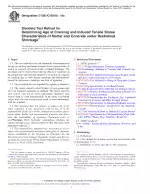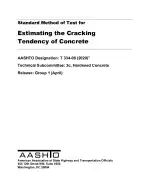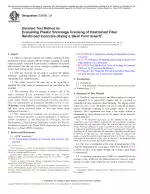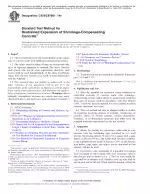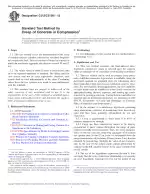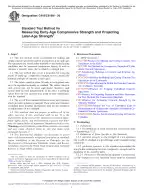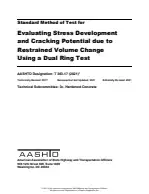ASTM C1581/C1581M-18a PDF Download
Standard ENStandard Test Method for Determining Age at Cracking and Induced Tensile Stress Characteristics of Mortar and Concrete under Restrained Shrinkage
Also Known As:
The ASTM C1581/C1581M-18a standard is a test method used to determine the age at cracking and induced tensile stress characteristics of mortar and concrete under restrained shrinkage. The purpose of this test method is to provide a relative comparison of materials and is not intended to determine the age at cracking in specific structures or exposures.
This test method is applicable to mixtures with aggregates of 13-mm maximum nominal size or less. It is useful for determining the relative likelihood of early-age cracking of different cementitious mixtures and aiding in the selection of cement-based materials that are less likely to crack under restrained shrinkage. However, it should be noted that the actual cracking tendency in service depends on various factors such as structure type, degree of restraint, rate of property development, construction and curing methods, and environmental conditions.
The test method can also be used to determine the relative effects of material variations on induced tensile stresses and cracking potential. These variations can include aggregate source, aggregate gradation, cement type, cement content, water content, supplementary cementing materials, or chemical admixtures.
For materials that do not crack during the test, the rate of tensile stress development at the time the test is terminated can be used as a basis for comparison of the materials.
It is important to note that this test method is not intended for expansive materials.
| Descriptors | autogenous shrinkage, restrained shrinkage, cracking, drying shrinkage, ring test,Concrete,Mortars,Cracks and Cracking,Deformation,Heat of Hydration,Mechanical Test,Physical Properties,Shrinkage,Tensile Stress |
| ICS Codes | 91.100.30 - Concrete and concrete products |
| Language(s) | English |
| File Size | 460.8 KB |

